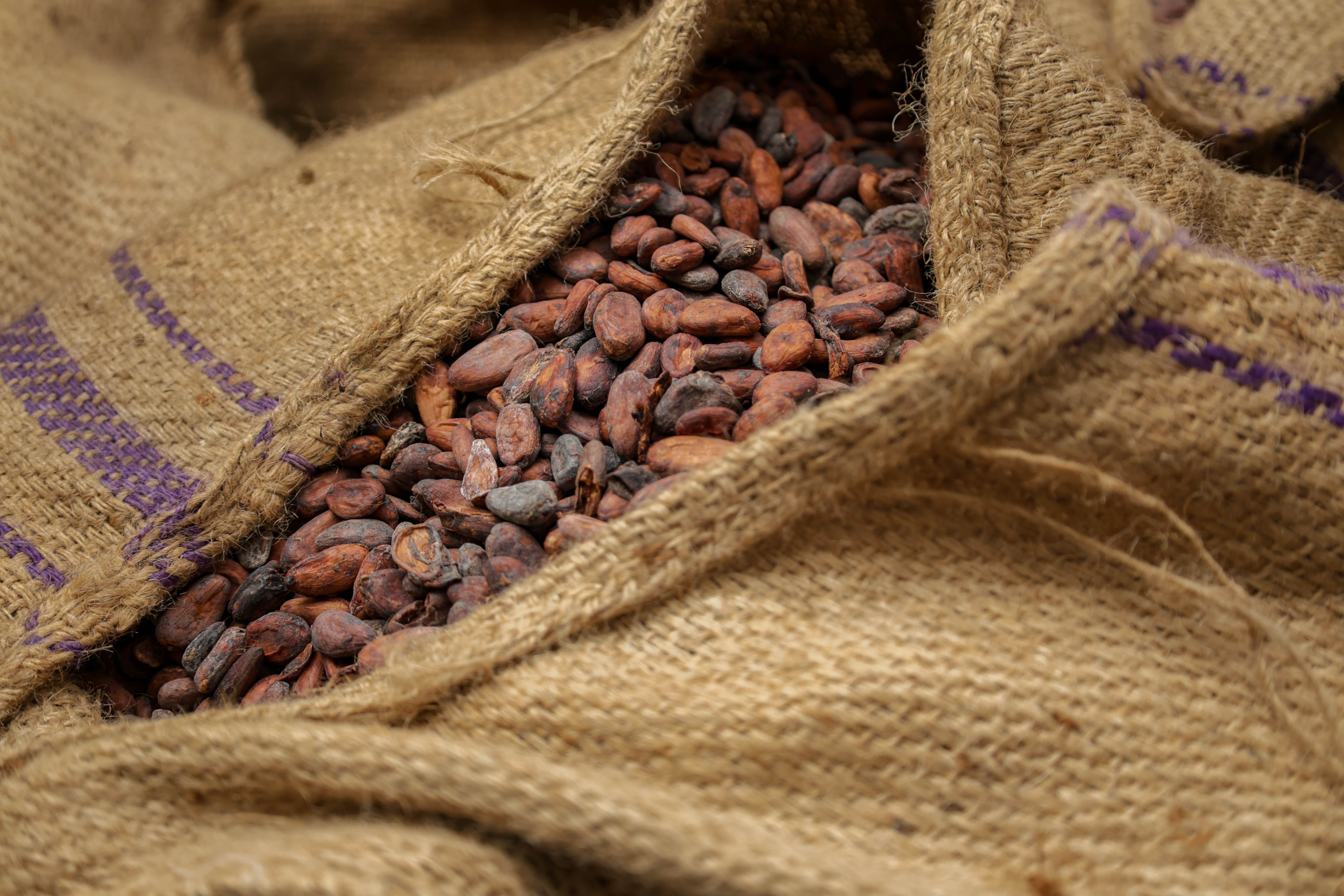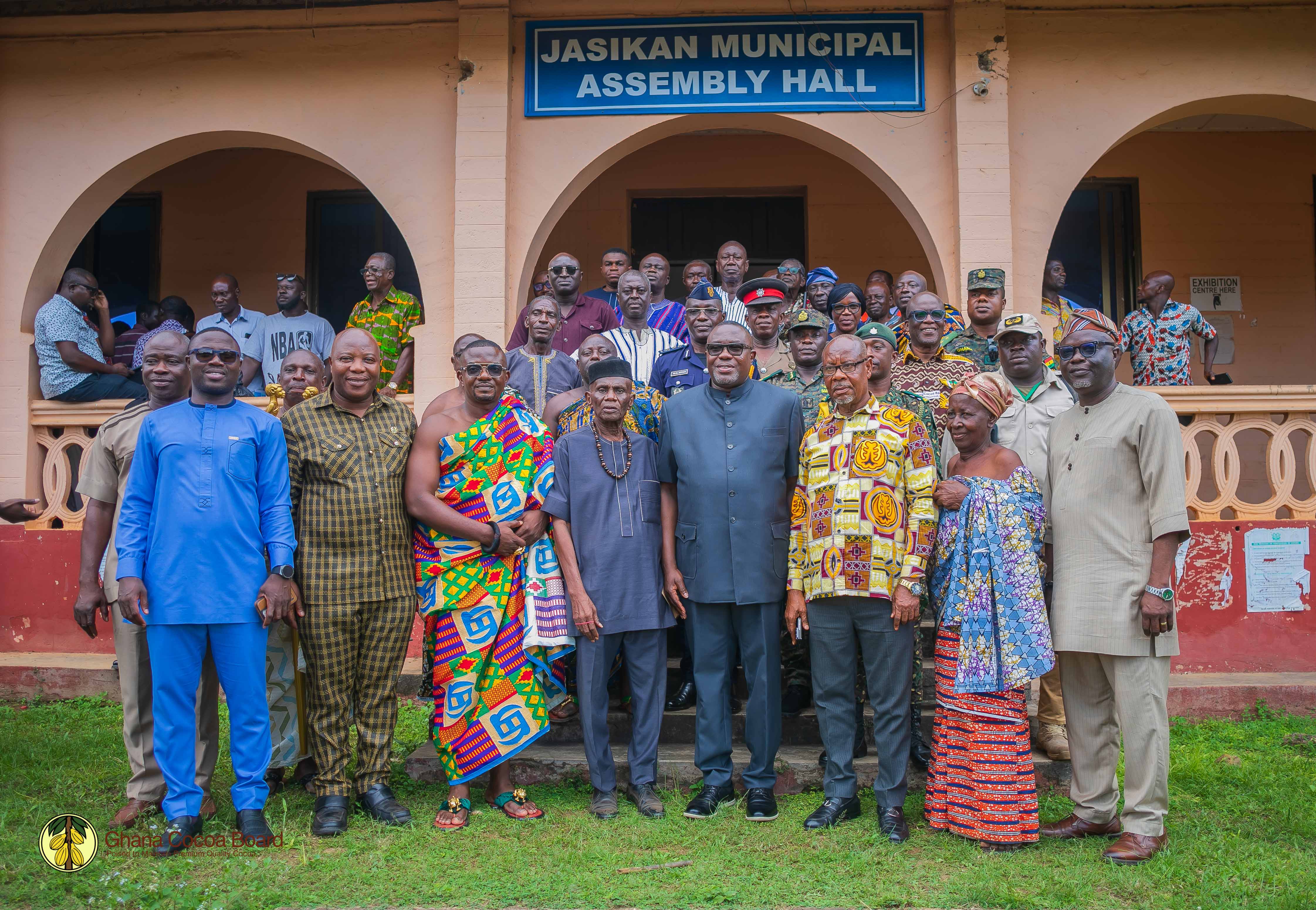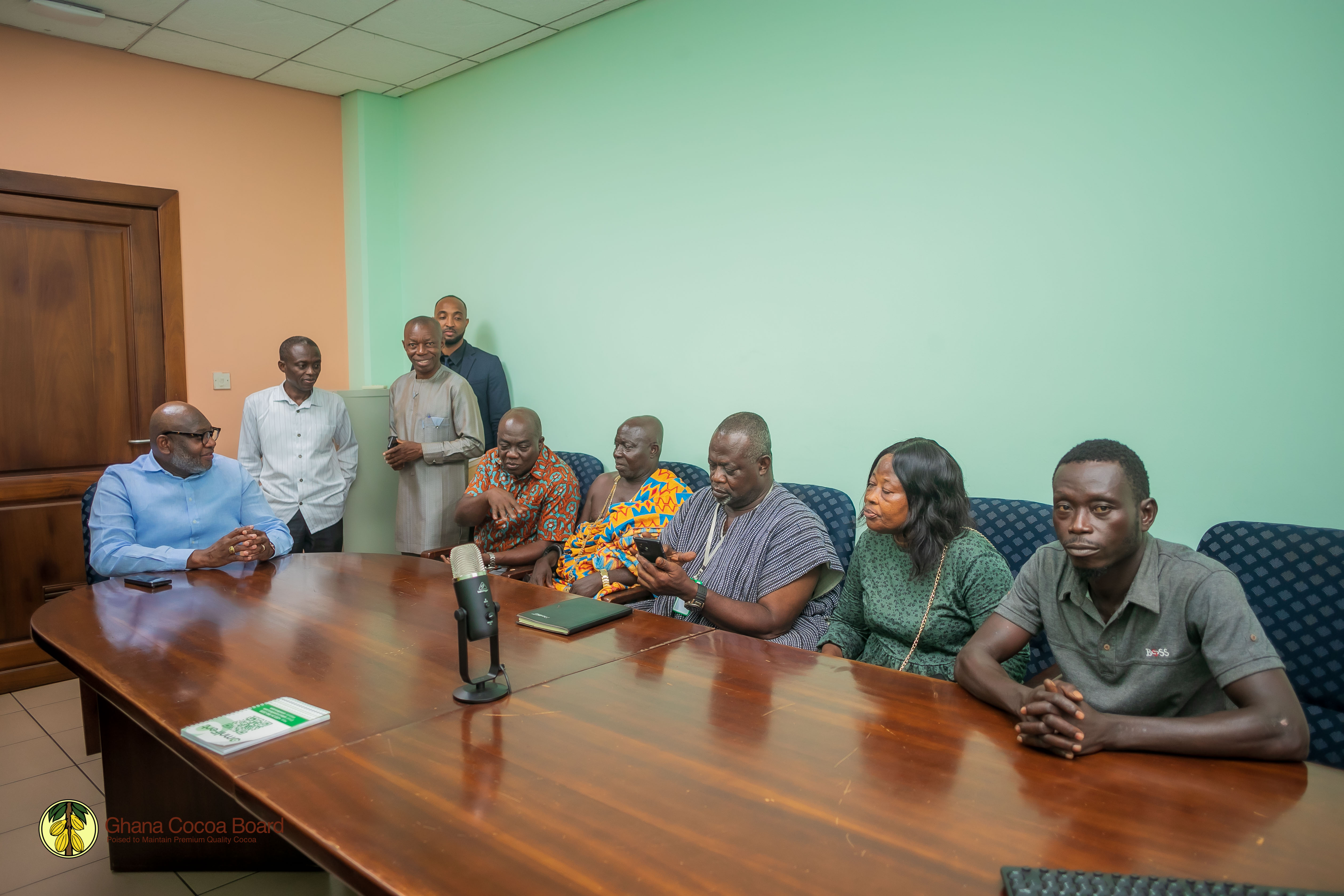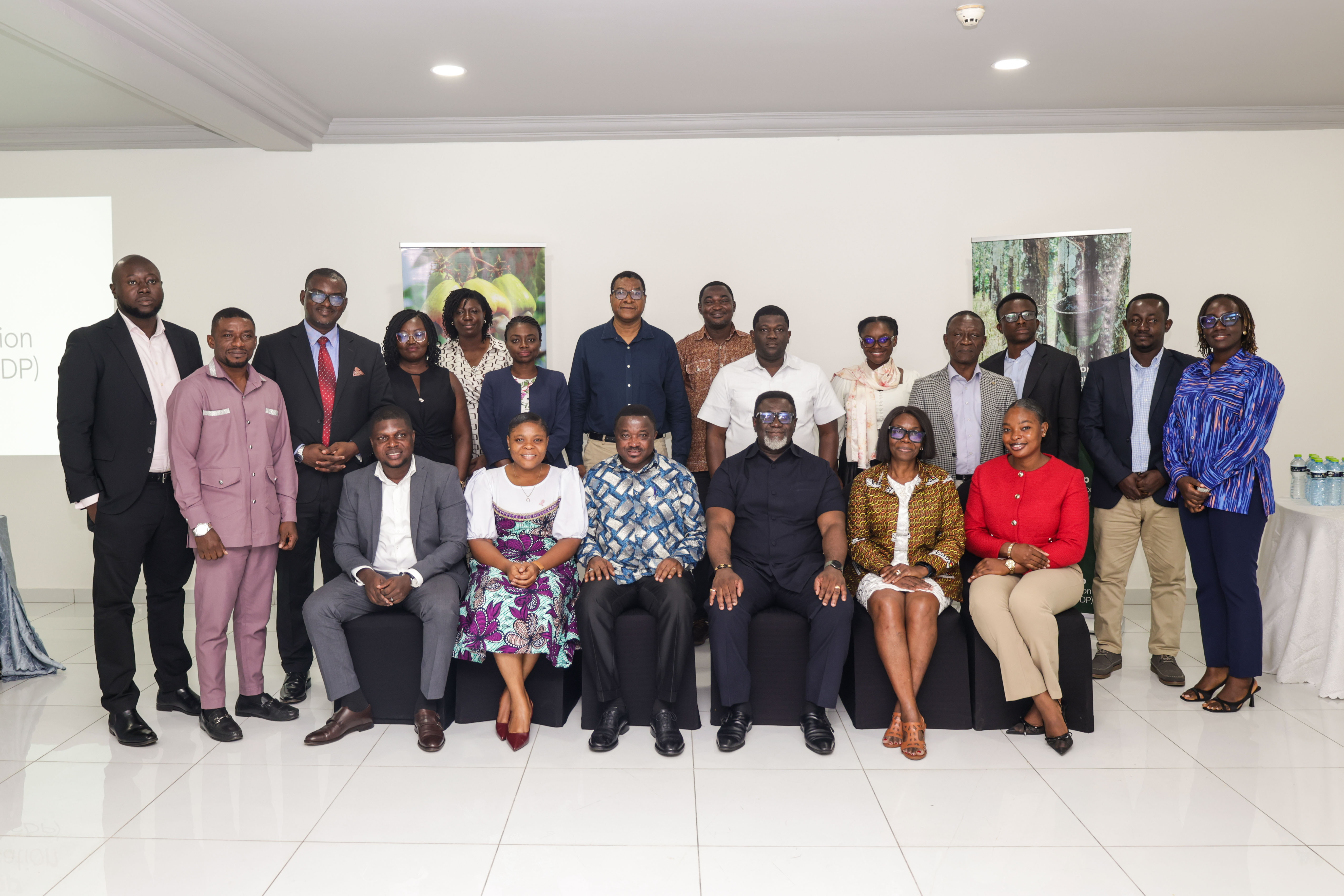GHANA’S COCOA PRICING MECHANISM VS. GLOBAL MARKET PRICES: WHO TRULY BENEFITS?

Date: 30th September 2025
By Edward Kojo Asante
Assist. Public Affairs Officer
Cocoa is one of Ghana’s most important exports, contributing significantly to the country’s foreign exchange earnings and sustaining the livelihoods of millions of smallholder farmers. Despite cocoa underpinning a global chocolate industry worth over $100 billion annually, the farmers, who are at the heart of the value chain, remain on the margins of economic security. The disparity between Ghana’s cocoa pricing structure and global market trends raises a critical question of “who really benefits from cocoa prices”?
Cocoa Pricing on the Global Market
On the international market, cocoa prices are influenced by supply and demand factors, speculative trading on commodity exchanges, weather patterns, and policy interventions in major producing countries. In 2024, global prices surged to historic highs of over $4,800 per tonne due to concerns about reduced supply from producing countries in West Africa. This volatility often creates opportunities for commodity traders and multinational companies, who are better positioned, to leverage fluctuations in global markets prices.
Cocoa Pricing in Ghana
In Ghana, cocoa pricing models are managed differently by the Producer Price Review Committee (PPRC), constituted by the Government of Ghana in 1984 as part of reforms to improve cocoa production by ensuring better transmission of world prices to farmers.
The committee consists of representatives from key stakeholders along value the chain i.e COCOBOD, Ministry of Finance, Farmers Rep, Haulers, License Buying Companies(LBC), the Governor(BoG) and Institute of Statistical, Social and Economic Research at the University of Ghana.
The committee meets as per their mandate before the commencement of each crop year to determine the producer price, margins, rates and fees for all stakeholders in the sector to ensure that farmers are guaranteed about 70% of the Free On Board (FOB) each year.
This happens after the Cocoa Marketing Company(CMC), a subsidiary of COCOBOD secures multiple contracts with foreign buyers. These contracts are converted into local currency based on the prevailing exchange rate, providing a measure of stability and predictability.
For the 2024/25 season, CMC secured contracts for about 500,000 tonnes at a weighted average of the FOB price of $4,850 per tonne. Farmers were allocated $3,100 per tonne equivalent to 63.9% which translated to approximately GHS 49,600 per tonne and GHS 3,120 per bag, whereas in the 2025/26 Crop Season, the producer price has been set at US$5,040 per tonne which represents a 62.58% increase in dollar terms.
In cedi terms, the new price translates to GH₵51,660 per tonne and GH₵3,228.75 per bag, a slight increase from GH₵49,600.
However, currency depreciation and rising input costs mean that this income often falls short of delivering a sustainable livelihood.
The disparity becomes clearer when tracing cocoa from the farm to the final consumer. Once the raw beans leave the shores of Ghana, local value addition decreases hence leaving cocoa farmers unable to benefit from their hard work.
Meanwhile, multinational chocolate companies in Europe and North America process the beans into liquor, butter, and powder, which are further used to produce high value chocolate products. The farmer’s share of the retail price of a chocolate bar is often less than 10%, with the majority of profits accruing to processors, brand owners, and retailers, leaving the key contributors in the supply chain with little.
The Living Income Differential (LID)
In 2019, Ghana and Côte d’Ivoire introduced the Living Income Differential (LID), a $400 per tonne premium aimed at improving farmer earnings. While this initiative has provided some relief, structural challenges still remain. The average Ghanaian cocoa farmer earns between $1 and $2 a day, highlighting a persistent gap between farm-level incomes and the broader wealth generated by cocoa globally.
The Analytical Gap: Who Benefits?
An examination of Ghana versus global cocoa prices reveals an uneven distribution of benefits. Farmers receive a guaranteed share that protects them from market shocks, but it also caps their ability to benefit from price surges. Conversely, international buyers and chocolate manufacturers often capture the upside of market dynamics, leveraging scale, infrastructure, and brand power.
Bridging this gap requires strategic interventions such as:
- Expanding local processing capacity to enable Ghana to capture more value from its cocoa exports.
- Strengthening farmer cooperatives and exploring innovative financing models to enhance bargaining power and reduce vulnerability.
- Aligning pricing mechanisms more closely with the cost of sustainable production to ensure that farmers receive not only a fairer share of global prices but also an income that supports long-term livelihoods.
Conclusion
The question of who benefits from cocoa prices underscores a structural imbalance in the global cocoa economy. While Ghanaian farmers form the backbone of production, their returns remain modest compared to the profits captured downstream in the value chain.
Addressing this imbalance is not only an economic necessity but also a moral imperative for sustaining the future of cocoa farming and improving the livelihood of cocoa farmers in Ghana.
Other News / Articles you might be interested in.

COCOBOD BOARD CHAIR URGES STAKEHOLDERS TO SAFEGUARD COCOA AS A NATIONAL HERITAGE
The Chairman of the Board of Directors of the Ghana Cocoa Board (COCOBOD), ...
Read More
NO GALAMSEY ON OUR LAND — TUFUHENE OF JEMA VOWS
The Tufuhene of Jema in the Aowin District of the Western South Region, ...
Read More
TREE CROP GRANTS TO BOOST FARMER INCOMES AND JOBS ACROSS GHANA’S GROWING REGIONS
Farmers and agribusinesses in Ghana’s major tree crop–producing regions are set ...
Read More